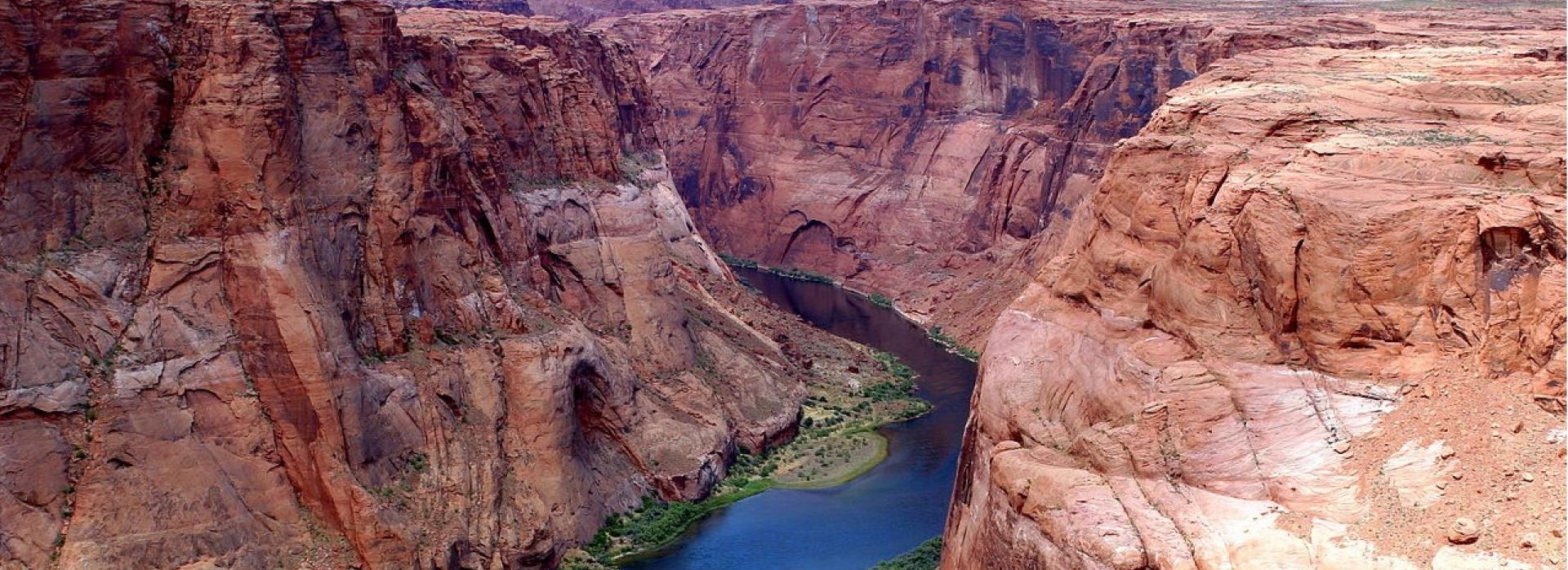Objectives
The Arizona Water Banking Authority (AWBA; Water Bank) was established in 1996 to store the unused portion of Arizona’s annual Colorado River entitlement in Central and Southern Arizona. The AWBA stores water in underground aquifers to earn long-term storage credits. These credits can be recovered (pumped) during a shortage to provide back-up water supplies (known as "firming") for Arizona water users.
OBJECTIVES
The AWBA stores water for the following purposes:
- Firming existing water supplies for Fourth Priority Colorado River and CAP M&I water users during shortages or extended CAP service interruptions,
- Meeting the State's obligations in the settlement of Indian water rights claims,
- Assisting in meeting the water management objectives of the Groundwater Code,
- Assisting other Lower Basin States through interstate water banking.
In addition to storing excess CAP supplies, the AWBA's enabling legislation has been amended over time to allow for the storage and use of other renewable supplies and the purchase of long-term storage credits.
FUNDING
To meet these objectives, the Water Bank is authorized to use three primary funding sources: an ad valorem property tax levied and collected by CAWCD, groundwater withdrawal fees and general fund appropriations when available. Each funding source can be used only for the specific purpose outlined in the table below. Water storage for interstate partners is paid for by the state requesting storage at the time the storage occurs.
The availability of these funds for AWBA use varies annually and by the amounts collected within each AMA or county. There are also restrictions on how the AWBA may utilize these revenues to meet its firming responsibilities. For example, withdrawal fees and ad valorem tax monies may only be used for the benefit of the AMA or county in which the funds were collected. The following table identifies the purpose for which the funds may be used.
| FUNDING SOURCE | Firming M&I CAP | Firming P4 On-River | Firming Indian Settlements (NIA) | Fulfilling Water Management Objectives |
|---|---|---|---|---|
| Ad Valorem Taxes | X | |||
| Groundwater Withdrawal Fees | X | X | X | |
| General Fund | X | X | X | X |
M&I FIRMING
CAP M&I FIRMING
AWBA firms the water supplies of Central Arizona Project (CAP) Municipal & Industrial (M&I) Priority subcontractors during a declared shortage on the Colorado River or during unplanned CAP service interruptions. The CAP service area includes the Phoenix, Pinal and Tucson Active Management Areas (AMA). There are currently 52 M&I subcontractors collectively holding entitlements of 620,678 acre-feet of CAP water and the Water Bank has stored 2,300,000 acre-feet of credits to firm these supplies. Read More>
P4 ON-RIVER FIRMING
AWBA firms the water supplies of Fourth Priority (P4) municipal Colorado River contractors. There are 29 on-River contractors that, as of July 2019, hold entitlements of 81,458 acre-feet. The Water Bank has stored over 400,000 acre-feet of credits for this purpose. AWBA has entered into an agreement with the Mohave County Water Authority (MCWA) reserving some of these credits specifically for firming their supplies. Read More>
INDIAN FIRMING PROGRAM
The Arizona Water Settlements Act (AWSA) of 2004 settled longtime claims to water by the Gila River Indian Community (Community) and the Tohono O'odham Nation (Nation). The AWBA, as the agent for the State, is responsible for meeting the State’s obligations under the Arizona Water Settlements Act (AWSA), P.L. 108-451. Under Section 105(b)(2) of the AWSA, the State must:
- Firm 15,000 acre-feet of non-Indian agricultural (NIA) priority Central Arizona Project (CAP) water re-allocated to the Gila River Indian Community
- Firm 8,724 acre-feet of NIA priority CAP water re-allocated in the future to Arizona Indian tribes
- Assist the Secretary of the Interior in carrying out the obligations of the Secretary in accordance with Section 306 of the AWSA
The Settlements Act requires the State to firm NIA priority CAP water for a 100-year period (until 2108) during times of water shortages and to deliver the water in the same manner that water with a Municipal and Industrial priority is delivered during water shortages. Read More>
INTERSTATE WATER BANKING
One of the AWBA’s objectives when it was established was to assist other Lower Basin States through interstate water banking. The AWBA entered into an agreement with the State of Nevada in 2001, specifically the Southern Nevada Water Authority (SNWA) in conjunction with the Colorado River Commission of Nevada (CRCN). At the time, Nevada was using its full entitlement and needed to find other water resources in order to meet its future demands. Through interstate banking, the AWBA was able to provide Nevada with a bridge until those other resources could be established. The agreement with Nevada has been amended to reflect changing conditions. Read More>
